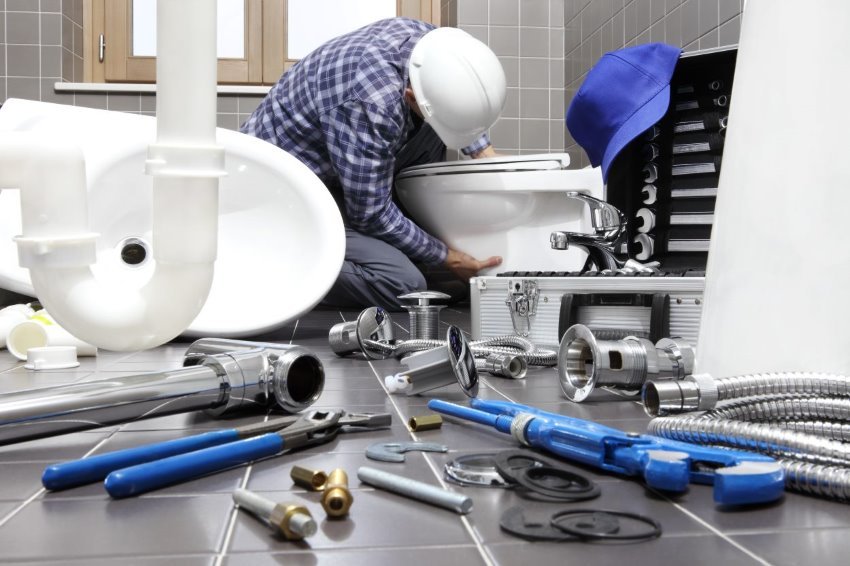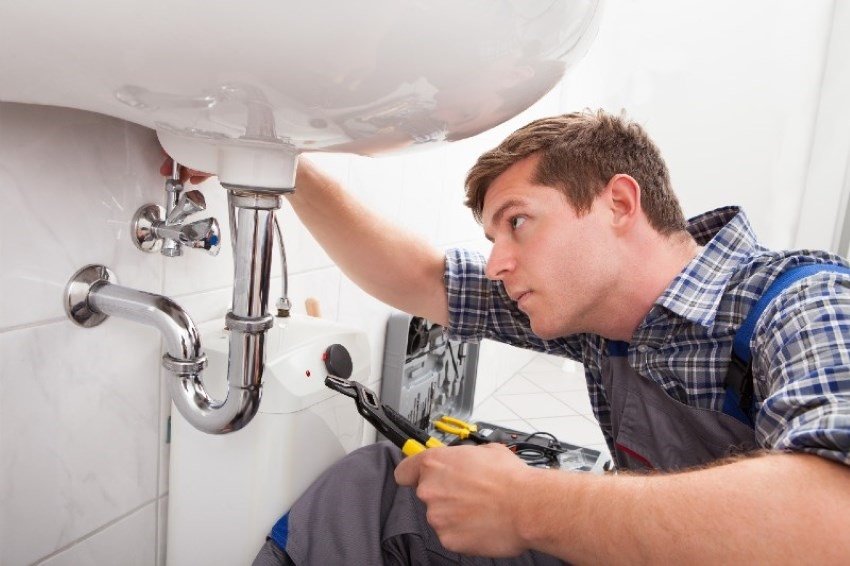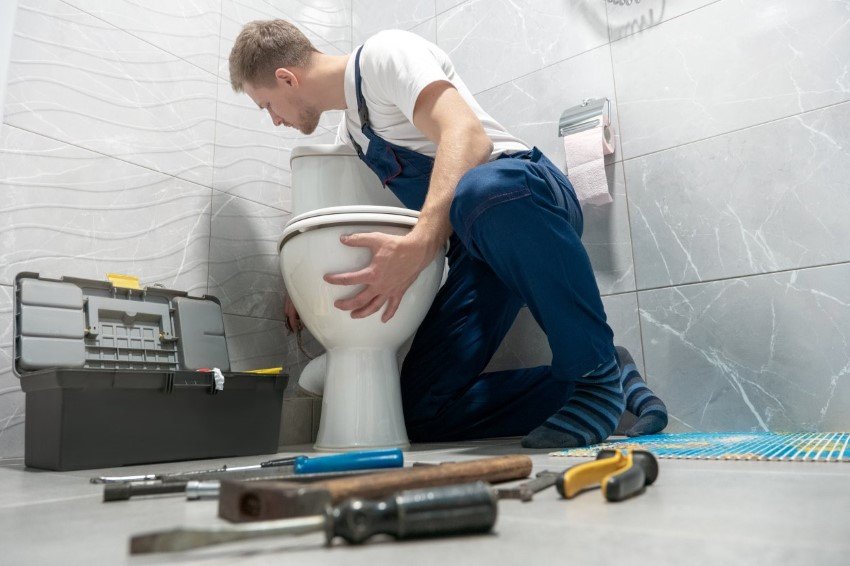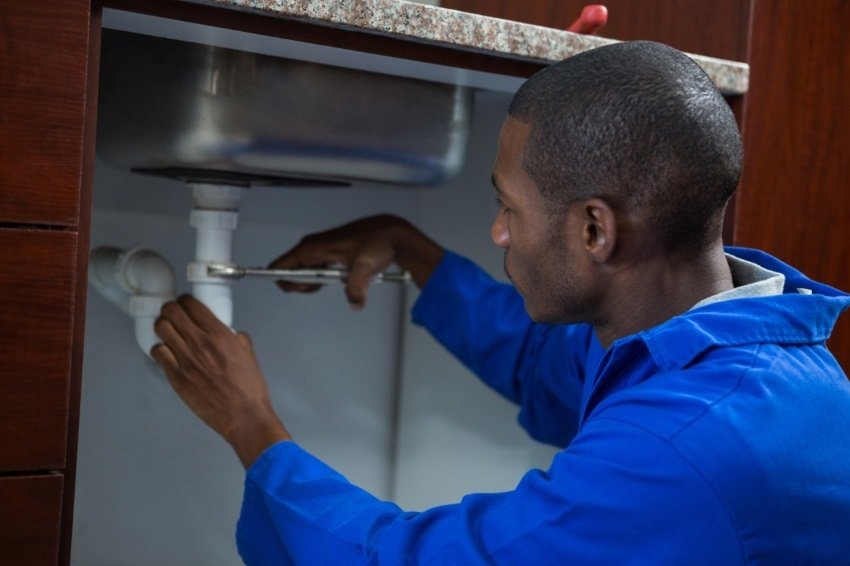Local Plumber Company – Georgetown, TX


CALL FOR A FREE ESTIMATE
How Local Plumber Companies Can Prepare for Peak Service Times
Seasonal fluctuations can significantly impact the demand for plumbing services. Local plumber near me companies must be proactive in preparing for peak service times to ensure they can meet customer needs efficiently and maintain high service standards. Here’s a detailed guide on how plumbing contractor companies can prepare for these busy periods:
1. Understanding Seasonal Trends:
– Data Analysis: Review historical service data to identify trends in service demand. Peak times might include winter months when pipes freeze or summer when water usage increases.
– Customer Feedback: Regularly collect and analyze customer feedback to understand common issues that arise during specific times of the year.
2. Staffing Adjustments:
– Hire Seasonal Workers: Consider hiring temporary or part-time staff to manage increased workload during peak times.
– Cross-Training: Ensure that all employees are cross-trained in various plumbing tasks to provide flexibility in job assignments.
– Overtime Planning: Plan for potential overtime needs and communicate expectations with your team in advance.
3. Inventory Management:
– Stock Up on Supplies: Anticipate the increased need for parts and supplies and stock up accordingly. Common items might include pipe insulation, water heater repair near me, and plumbing fixtures.
– Supplier Relationships: Strengthen relationships with suppliers to ensure quick and reliable access to necessary materials.
4. Scheduling and Dispatch:
– Advanced Booking: Encourage customers to book services in advance during known peak times.
– Efficient Routing: Use route optimization software to schedule service calls efficiently, reducing travel time and increasing the number of jobs completed each day.
– Emergency Slots: Reserve a portion of your daily schedule for emergency calls to handle urgent issues promptly.
5. Customer Communication:
– Proactive Outreach: Contact regular customers ahead of peak times to remind them of seasonal maintenance services that can prevent emergencies.
– Clear Communication Channels: Ensure that your business has multiple channels for customer communication, including phone, email, and online booking.
– Timely Updates: Keep customers informed about wait times and delays, especially during high-demand periods.
6. Training and Preparedness:
– Seasonal Training: Provide training sessions focused on the specific challenges and common issues associated with peak times, such as frozen pipes in winter or clogged drains in spring.
– Emergency Procedures: Review and practice emergency response procedures to ensure the team is prepared for urgent situations.
7. Marketing and Promotions:
– Seasonal Campaigns: Run targeted marketing campaigns highlighting the services most needed during peak times, such as winter pipe insulation or summer irrigation system checks.
– Special Offers: Provide discounts or special offers on preventative maintenance services before peak seasons to encourage early bookings.
8. Technology Integration:
– Service Management Software: Implement advanced service management software to handle scheduling, dispatching, and customer communications more efficiently.
– Mobile Tools: Equip technicians with mobile devices and apps for real-time updates, job tracking, and instant communication.
9. Financial Planning:
– Budget for Peaks: Prepare a budget that accounts for the increased expenses during peak times, such as higher labor costs and additional inventory.
– Cash Flow Management: Ensure sufficient cash flow to cover the operational costs associated with peak service times.
10. Quality Control:
– Service Standards: Maintain high standards of service quality even during busy periods. Conduct regular checks and customer follow-ups to ensure satisfaction.
– Feedback Mechanism: Implement a robust feedback mechanism to quickly address any service issues and maintain a positive reputation.
11. Community Engagement:
– Local Partnerships: Partner with local businesses and community organizations to increase your visibility and build a supportive network.
– Public Awareness: Engage in community outreach programs to educate the public about common plumbing issues and preventative measures.
By implementing these strategies, local plumber companies can effectively manage peak service times, ensuring they meet customer needs, maintain service quality, and optimize operational efficiency. This proactive approach helps in building customer loyalty, enhancing reputation, and achieving sustainable business growth.


The Impact of Online Reviews and Testimonials for Local Plumber Companies
Online reviews and testimonials have become crucial for local plumber companies, influencing potential customers’ perceptions and decisions. Positive reviews can enhance a company’s reputation and attract new clients, while negative feedback can deter prospective customers. Here’s a comprehensive analysis of how online reviews and testimonials impact local plumber companies:
1. Building Trust and Credibility:
– Social Proof: Online reviews and testimonials serve as social proof, demonstrating to potential customers that others have had positive experiences with the company.
– Transparency: Reviews provide transparency, showcasing real customer experiences and helping to build trust with potential clients.
2. Attracting New Customers:
– First Impressions: Many customers rely on online reviews to form their first impression of a company. Positive reviews can encourage them to choose one plumber over another.
– Search Engine Rankings: High ratings and frequent reviews can improve a company’s search engine rankings, making it more visible to potential customers searching for plumbing services online.
3. Customer Decision-Making:
– Influencing Choices: Reviews often play a critical role in the decision-making process, with many customers reading multiple reviews before selecting a plumber.
– Detail-Oriented: Detailed reviews that mention specific services, professionalism, and outcomes can be particularly persuasive.
4. Enhancing Reputation:
– Positive Feedback: Consistently receiving positive reviews enhances the company’s reputation, positioning it as a reliable and professional service provider.
– Handling Criticism: How a company responds to negative reviews also impacts its reputation. Constructive and professional responses can mitigate the damage and demonstrate a commitment to customer satisfaction.
5. Improving Services:
– Customer Insights: Reviews provide valuable insights into customer satisfaction and areas needing improvement, helping companies refine their services.
– Quality Control: Regularly monitoring reviews can help identify recurring issues, allowing companies to address problems proactively and maintain high service standards.
6. Marketing and Promotions:
– Testimonials as Marketing Tools: Positive testimonials can be used in marketing materials, on the company’s website, and across social media platforms to attract new clients.
– Showcasing Expertise: Highlighting specific reviews that mention successful projects or complex jobs can showcase the company’s expertise and capabilities.
7. Encouraging Customer Feedback:
– Active Solicitation: Encouraging satisfied customers to leave reviews can help maintain a steady stream of positive feedback and counterbalance any negative reviews.
– Ease of Access: Making it easy for customers to leave reviews by providing direct links or reminders can increase the number of testimonials.
8. Managing Negative Reviews:
– Timely Responses: Responding quickly and professionally to negative reviews can help address customer concerns and demonstrate a commitment to resolving issues.
– Learning Opportunities: Negative feedback can provide insights into areas where the company may need to improve, turning criticism into a learning opportunity.
9. Building Long-Term Relationships:
– Engaging with Reviewers: Engaging with customers who leave reviews, whether positive or negative, helps build stronger relationships and shows that the company values customer feedback.
– Follow-Up: Following up with customers who leave reviews to thank them and address any concerns can enhance customer loyalty.
10. Competitive Advantage:
– Standing Out: A high volume of positive reviews can differentiate a local plumber company from competitors, making it more likely to be chosen by potential customers.
– Customer Trust: In a competitive market, companies with better reviews often gain more trust and business than those with fewer or lower-rated reviews.
Online reviews and testimonials significantly impact local plumber companies by shaping their reputation, influencing customer decisions, and providing valuable feedback for service improvements. By actively managing and responding to reviews, encouraging satisfied customers to share their experiences, and leveraging positive testimonials in marketing efforts, local plumber companies can enhance their credibility, attract new clients, and maintain high standards of customer satisfaction. In today’s digital age, a strong online presence, bolstered by positive reviews, is essential for the growth and success of local plumbing businesses.
How Local Plumber Companies Are Integrating New Tools and Techniques
The plumbing industry, like many others, is undergoing significant transformations thanks to technological advancements and innovative techniques. Local plumber companies are integrating these new tools and methods to improve efficiency, enhance service quality, and stay competitive. Here’s an exploration of how local plumber companies are embracing these changes:
1. Adopting Advanced Diagnostic Tools:
– Video Inspection Cameras: Plumbers near me use high-resolution cameras to inspect pipes and sewer lines, identifying blockages, leaks, and damages without invasive digging.
– Thermal Imaging: Infrared cameras help detect hidden leaks and water damage by identifying temperature variations behind walls and under floors.
2. Embracing Smart Plumbing Systems:
– Smart Water Heaters: These devices can be controlled remotely via smartphone apps, allowing for temperature adjustments and monitoring usage patterns for energy efficiency.
– Leak Detection Systems: Smart leak detectors alert homeowners and plumbers close to me of leaks in real time, preventing extensive water damage and reducing water waste.
3. Utilizing Trenchless Technology:
– Pipe Bursting: A method where a new pipe is pulled through the old one, breaking it apart and replacing it without extensive digging.
– Pipe Relining: This technique involves inserting a resin-coated liner into damaged pipes, which hardens to form a new pipe within the old one, minimizing disruption.
4. Incorporating Eco-Friendly Solutions:
– Low-Flow Fixtures: Installation of low-flow toilets, faucets, and showerheads to conserve water and reduce utility bills.
– Greywater Recycling Systems: Systems that recycle water from sinks, showers, and washing machines for irrigation and other non-potable uses.
5. Implementing Water Efficiency Technologies:
– Pressure-Regulating Valves: Devices that adjust water pressure to optimal levels, reducing the risk of pipe bursts and leaks while conserving water.
– Tankless Water Heaters: These units heat water on demand, reducing energy consumption compared to traditional storage tank water heaters.
6. Enhancing Workflow with Software Solutions:
– Field Service Management Software: Platforms that streamline scheduling, dispatching, and job tracking, improving overall efficiency and customer satisfaction.
– Customer Relationship Management (CRM) Systems: Tools that help manage customer interactions, track service history, and automate follow-up communications.
7. Integrating Augmented Reality (AR) and Virtual Reality (VR):
– AR for Training: AR applications can simulate real-life plumbing scenarios for training purposes, providing hands-on experience without the risks associated with actual plumbing issues.
– VR for Design and Planning: VR technology allows plumbers and customers to visualize plumbing layouts and renovations before actual implementation.
8. Leveraging Drones and Robotics:
– Drones for Inspections: Drones equipped with cameras can inspect hard-to-reach areas, such as rooftops and large sewer systems, safely and efficiently.
– Robotic Pipe Cleaners: Robots can navigate pipes to clean blockages and perform repairs in areas that are otherwise difficult to access.
9. Adopting Advanced Plumbing Materials:
– PEX Piping: Flexible and durable, PEX piping is easier to install than traditional copper or PVC, reducing labor time and costs.
– Epoxy Pipe Coating: This technique involves applying an epoxy coating inside existing pipes to repair leaks and prevent corrosion without the need for pipe replacement.
10. Promoting Preventative Maintenance Programs:
– Regular Check-Ups: Utilizing technology to schedule and perform regular maintenance checks, identifying potential issues before they become major problems.
– Maintenance Plans: Offering customers subscription-based maintenance plans to ensure their plumbing systems remain in optimal condition year-round.
11. Enhancing Safety and Compliance:
– Digital Compliance Tools: Software that ensures all plumbing work adheres to local codes and regulations, reducing the risk of non-compliance penalties.
– Safety Gear Innovations: Utilizing advanced safety equipment, such as anti-vibration gloves and protective eyewear, to enhance worker safety on the job.
Local plumber companies are increasingly integrating new tools and techniques to improve service delivery, increase efficiency, and provide innovative solutions to their customers. By adopting advanced diagnostic tools, smart systems, eco-friendly solutions, and leveraging modern software and materials, these companies can stay competitive in a rapidly evolving industry. Embracing these technological advancements not only enhances operational capabilities but also ensures higher customer satisfaction and long-term business growth.


Strategies for Local Plumber Companies to Grow and Scale Their Operations
Scaling a local plumber company requires strategic planning, investment in technology, marketing, and operational efficiency. Here are comprehensive strategies to help local plumber companies grow and scale their operations:
1. Streamline Operations with Technology:
– Field Service Management Software: Implement software to manage scheduling, dispatching, and invoicing efficiently. This reduces administrative tasks and improves service delivery.
– CRM Systems: Use customer relationship management (CRM) systems to track customer interactions, manage service history, and automate follow-up communications.
– Mobile Apps for Technicians: Equip technicians with mobile apps to access job details, update work status in real-time, and communicate with the office.
2. Expand Service Offerings:
– Specialized Services: Offer specialized services such as sewer line inspections, water heater installations, and eco-friendly plumbing solutions.
– Preventative Maintenance Plans: Develop maintenance programs that provide regular check-ups and services, creating a steady revenue stream and reducing emergency call-outs.
3. Enhance Marketing Efforts:
– Local SEO: Optimize your website for local search terms and ensure your business appears in local directories and Google My Business.
– Content Marketing: Create valuable content such as blog posts, how-to guides, and videos to attract and educate potential customers.
– Social Media: Maintain active profiles on social media platforms to engage with customers, share updates, and promote services.
4. Improve Customer Service:
– 24/7 Availability: Offer round-the-clock emergency services to cater to urgent plumbing issues.
– Customer Feedback: Regularly collect and analyze customer feedback to improve services and address any concerns promptly.
– Loyalty Programs: Implement loyalty programs that reward repeat customers with discounts or priority services.
5. Invest in Training and Development:
– Ongoing Training: Provide continuous training for technicians to stay updated with the latest plumbing techniques, safety standards, and customer service skills.
– Certifications: Encourage technicians to obtain relevant certifications to enhance their expertise and credibility.
6. Optimize Financial Management:
– Budgeting: Create detailed budgets and financial plans to allocate resources effectively and monitor cash flow.
– Pricing Strategies: Review and adjust pricing strategies to ensure competitiveness while maintaining profitability.
– Diversify Revenue Streams: Explore additional revenue streams such as offering products (e.g., water filters) or collaborating with other home service providers.
7. Form Strategic Partnerships:
– Local Businesses: Partner with local businesses, such as real estate agencies and property management companies, to secure regular service contracts.
– Suppliers: Build strong relationships with suppliers to ensure access to quality materials at competitive prices.
8. Expand Geographical Reach:
– New Locations: Open additional branches in neighboring areas to expand your service coverage.
– Franchising: Consider franchising your business model to grow rapidly while leveraging local expertise.
9. Implement Quality Control Measures:
– Standard Operating Procedures (SOPs): Develop and enforce SOPs to maintain consistent service quality across all jobs.
– Performance Metrics: Track key performance indicators (KPIs) such as response time, job completion rate, and customer satisfaction to identify areas for improvement.
10. Leverage Data Analytics:
– Customer Insights: Use data analytics to gain insights into customer behavior, preferences, and trends. This can help tailor services and marketing efforts more effectively.
– Operational Efficiency: Analyze operational data to identify bottlenecks, optimize routes, and improve resource allocation.
11. Brand Development:
– Professional Branding: Develop a strong brand identity with a professional logo, consistent color scheme, and branded uniforms for technicians.
– Customer Testimonials: Showcase positive reviews and testimonials on your website and marketing materials to build trust and credibility.
12. Sustainability Practices:
– Eco-Friendly Solutions: Offer sustainable plumbing solutions such as water-saving fixtures and greywater systems to appeal to environmentally conscious customers.
– Green Certifications: Obtain green certifications to demonstrate your commitment to sustainable practices and attract a broader customer base.
Growing and scaling a local plumber company requires a multi-faceted approach that combines operational efficiency, customer service excellence, strategic marketing, and financial management. By leveraging technology, expanding service offerings, and investing in training and development, local plumber companies can enhance their competitiveness and achieve sustainable growth. Strategic partnerships, geographical expansion, and a focus on quality and sustainability further contribute to long-term success in the plumbing industry.
Schedule A Free Estimate
Reach Us
Stamped Concrete Contractor ATX
Austin TX
(512) 877-2721
